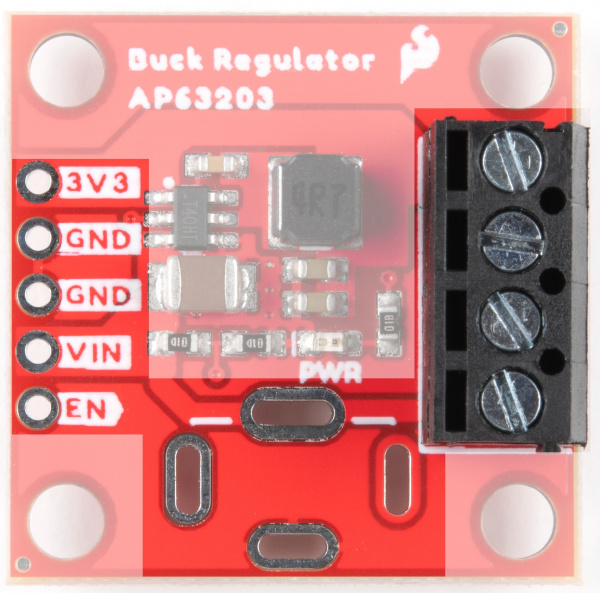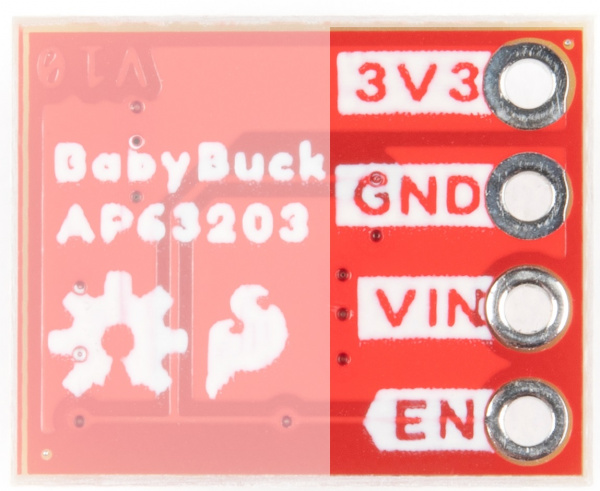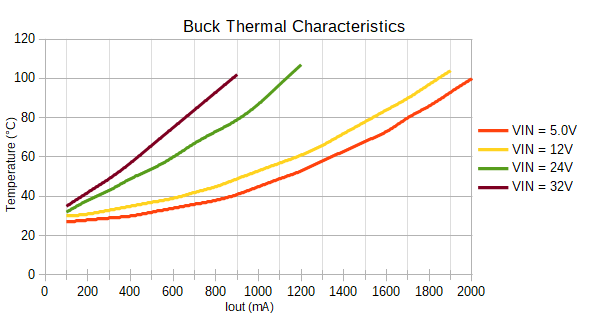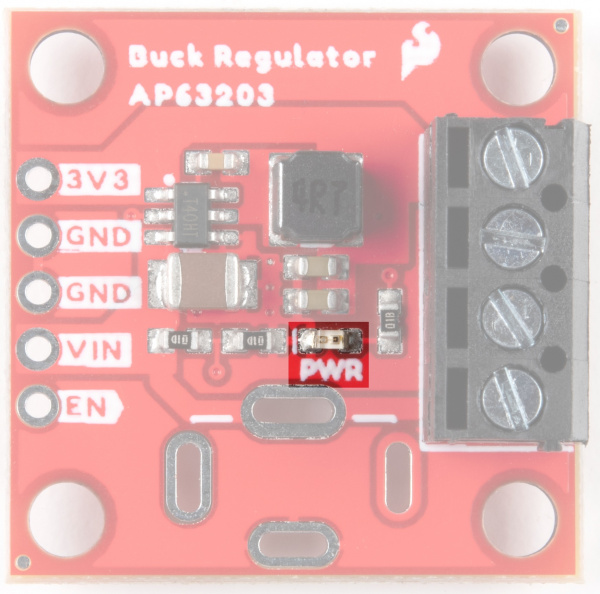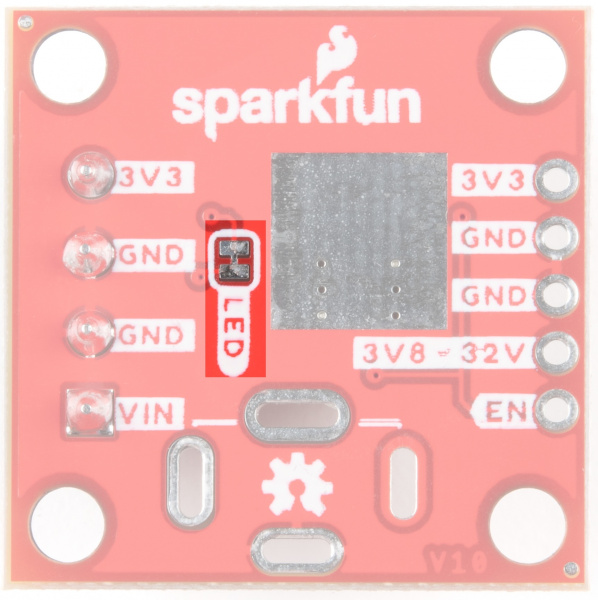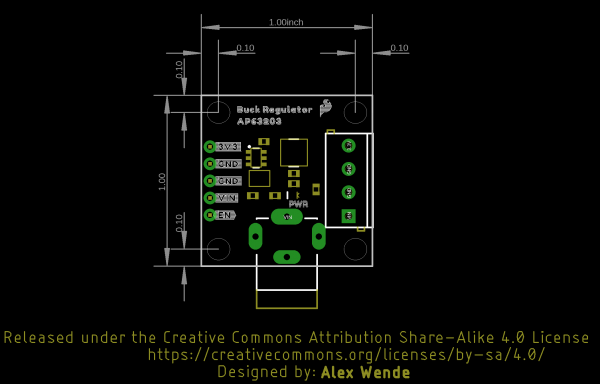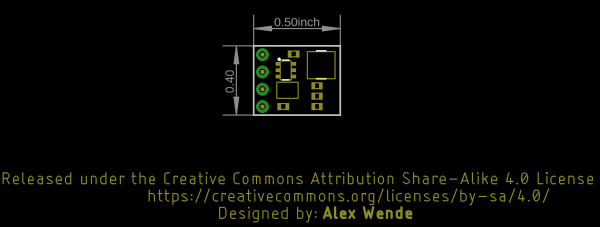Buck Regulator Hookup Guide
Hardware Overview
AP63203
The AP63203 is a 2A, synchronous buck converter from Diodes Inc that has a wide input voltage range (3.8V to 32V) and provides high-efficiency step-down DC/DC conversion to 3.3V. Frequency Spread Spectrum (FSS) reduces EMI and a proprietary gate driver scheme resists switching node ringing without sacrificing MOSFET turn-on and turn-off times, which further erases high-frequency radiated EMI noise. Full details can be found in the datasheet.
Features:
- VIN 3.8V to 32V
- Up to 2A Continuous Output Current
- 0.8V ± 1% Reference Voltage
- 22µA Ultralow Quiescent Current
- Switching Frequency - 1.1MHz
- Supports Pulse Frequency Modulation (PFM)
- Up to 80% Efficiency at 1mA Light Load
- Up to 88% Efficiency at 5mA Light Load
- Fixed Output Voltage - 3.3V
- Proprietary Gate Driver Design for Best EMI Reduction
- Frequency Spread Spectrum (FSS) to Reduce EMI
- Precision Enable Threshold to Adjust UVLO
- Protection Circuitry
- Overvoltage Protection
- Cycle-by-Cycle Peak Current Limit
- Thermal Shutdown
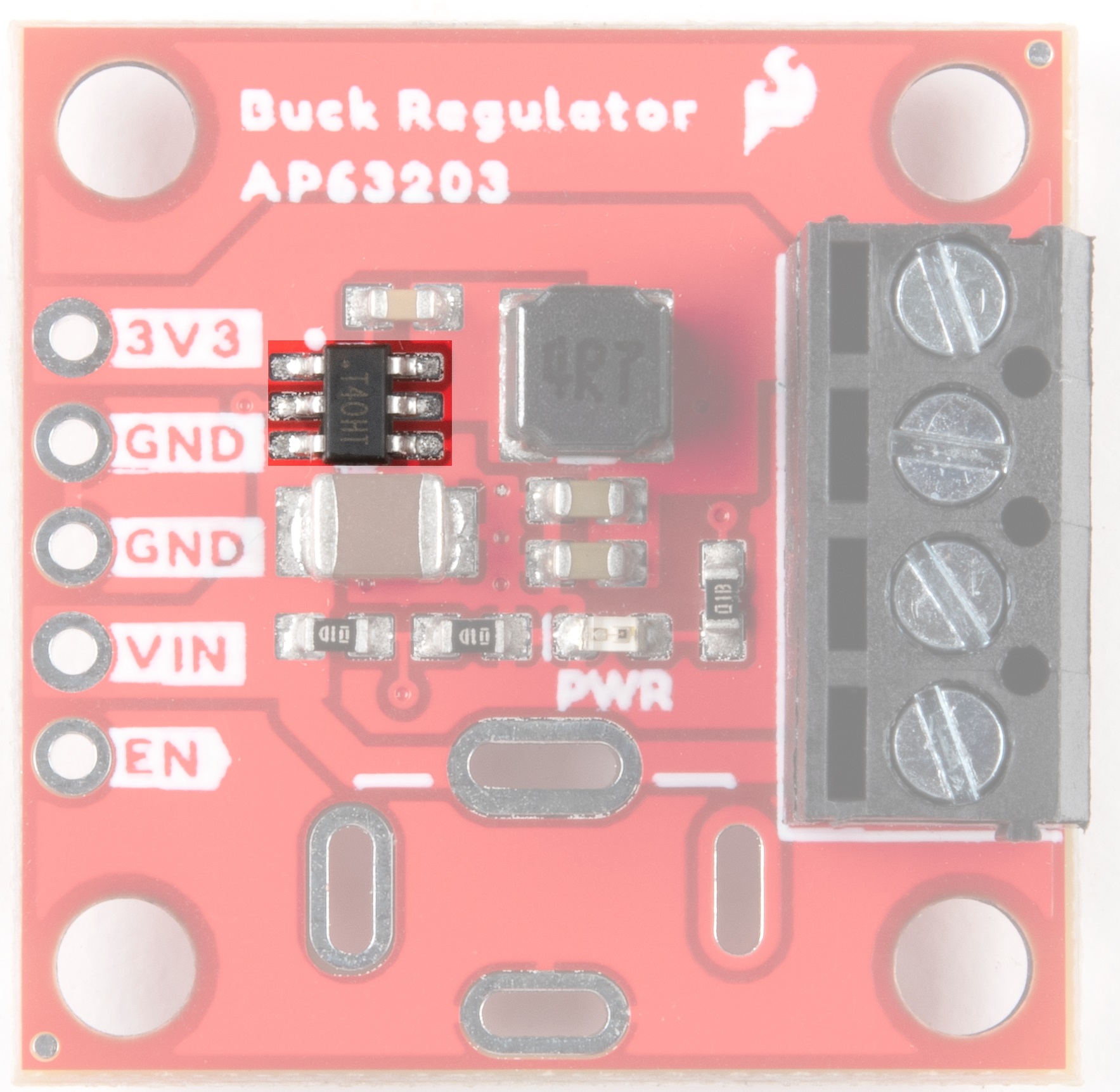 |
 |
| AP63203 on the Buck Regulator | AP63203 on the Baby Buck Regulator |
Power
For the Buck Regulator, input power can be supplied in a number of ways. There are screw terminals on the right side of the board, solder pads for a barrel jack, which can be mounted on the top or bottom side of the board, and the plated through holes on the left side of the board can all be used as input. Output can be obtained via the screw terminals or the plated through holes.
The Baby Buck sacrifices flexibility for space. Use the plated through holes for input and output power.
Both the Buck Regulator as well as the Baby Buck Regulator ratchet the output voltage down to 3.3V. Be mindful that thermal properties change as Vin increases.
Thermal Characteristics
One of the benefits of a buck converter over a linear regulator is their superior efficiency at stepping down the voltage. Unfortunately though, heat can still be a problem, particularly as the difference between the input and output voltage increases.
One of the trade-offs of the small size of the BabyBuck is because there is less copper to pull heat away from switching IC, the maximum output current available is reduced due to the thermal protections. Refer to the graphs below to see the how hot you can expect the AP63203 to get at various loads and supply voltages.
To dissipate some of the excess heat, we've added a copper pad for a heat sink on the back of the 1" x 1" Buck Regulator Board. Use one of our small heatsinks and attach it with some thermal tape.
Power LED and Jumper
On the 1" x 1" Buck Regulator, there is a power LED available for use.
To disable this LED, cut the Jumper on the back of the board:
